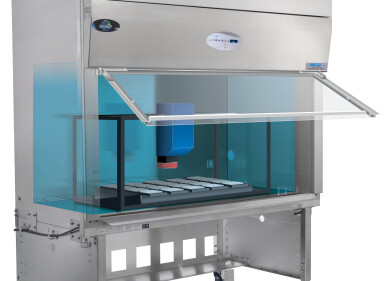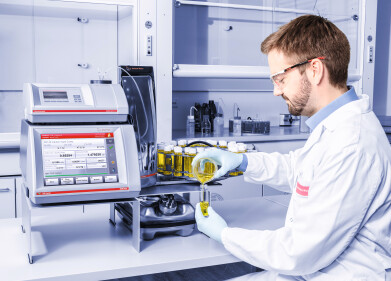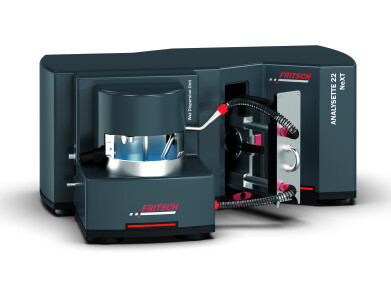Laboratory Products
A Closer Look at LC-MS Basics
Jul 18 2014
What is LC-MS?
LC-MS is a powerful analytical tool that combines two techniques and is used to determine the mass and structure of individual compounds found in a sample. The basic process is:
- Separation of the sample into individual compounds using High Performance Liquid Chromatography (HPLC).
- Detection of the individual compounds (and their fragments) using mass spectrometry (MS).
LC Basics
HPLC is a chromatographic technique used to separate a sample into its individual components. The basic principle is similar to that used in school chemistry labs to separate ink spots. Filter paper and water is used to reveal the individual pigments that make up each ink colour. The pigments separate out as the water flows through the filter paper because the pigments dissolve at different rates. The relative attraction of the pigments to the water and paper produces the separation. A similar process happens in a HPLC column, only this time it is the relative affinity of the components in the sample for the stationary (solid) phase and mobile (liquid) phase. The solid phase is the packing in the column, the mobile phase the liquid flowing through it.
Various factors affect the separation. To allow complete separation these variables are optimized. These variables include:
- Solid phase composition (particle size/type)
- Mobile phase composition (polarity)
- Flow rate
- Pressure
- Temperature
HPLC uses several different detectors to detect the separated compounds as they leave the column. The use of mass spectroscopy as the detector offers a high resolution and sensitivity.
MS Basics
Mass spectroscopy is a technique used to measure the number of particles as a function of their mass/charge ratio (m/e). There are three main steps in measuring the mass spectrum of a compound:
- Bombard the molecule with electrons to knock an electron from the molecule forming a cation. If the cation is unstable, it might break up into smaller fragments.
- Separate the cations according to their m/e ratio using an electric or magnetic field. As ions pass through an electric or magnetic field their path is deflected.
- Ions with a certain m/e ratio are detected and counted.
The output from an MS is a graph of the relative abundance of ions at a given m/e ratio. From this spectrum, an analysis can yield information on the structure of the compound.
Use of LC-MS
The first attempt to use mass spectroscopy and HPLC came in the late 1960’s. LC-MS systems became commercially available in the 1980s due to advances in instrument techniques. As techniques advanced further, LC-MS instruments became easier to use. This allowed a wider community of scientists to use them. Due to the sensitivity of the detector, LC-MS became widely used in the drug discovery industry, particularly in detecting drug metabolites.
Nowadays, the technique is not just confined to drug development. LC-MS played an important role in the detection of adulterated meat in the recent horsemeat food scandal.
Digital Edition
International Labmate 49.6 - Sept 2024
September 2024
Chromatography Articles - HPLC gradient validation using non-invasive flowmeters Mass Spectrometry & Spectroscopy Articles - From R&D to QC, making NMR accessible for everyone: Putting NMR...
View all digital editions
Events
Oct 06 2024 Liverpool, UK
Oct 08 2024 Gothenburg, Sweden
Oct 09 2024 Birmingham, UK
Oct 09 2024 NEC, Birmingham, UK
Oct 15 2024 Milan, Italy








.jpg)









